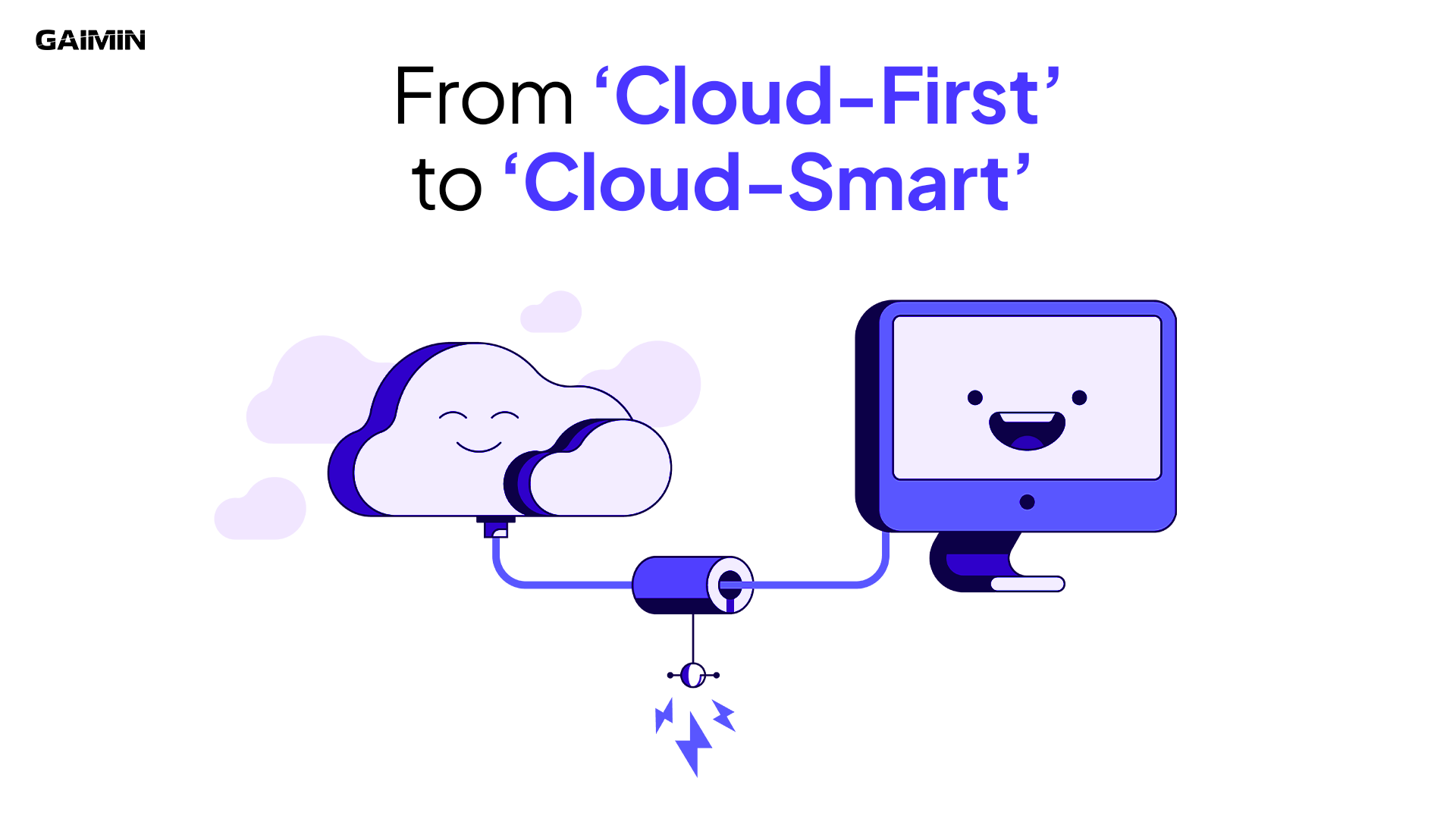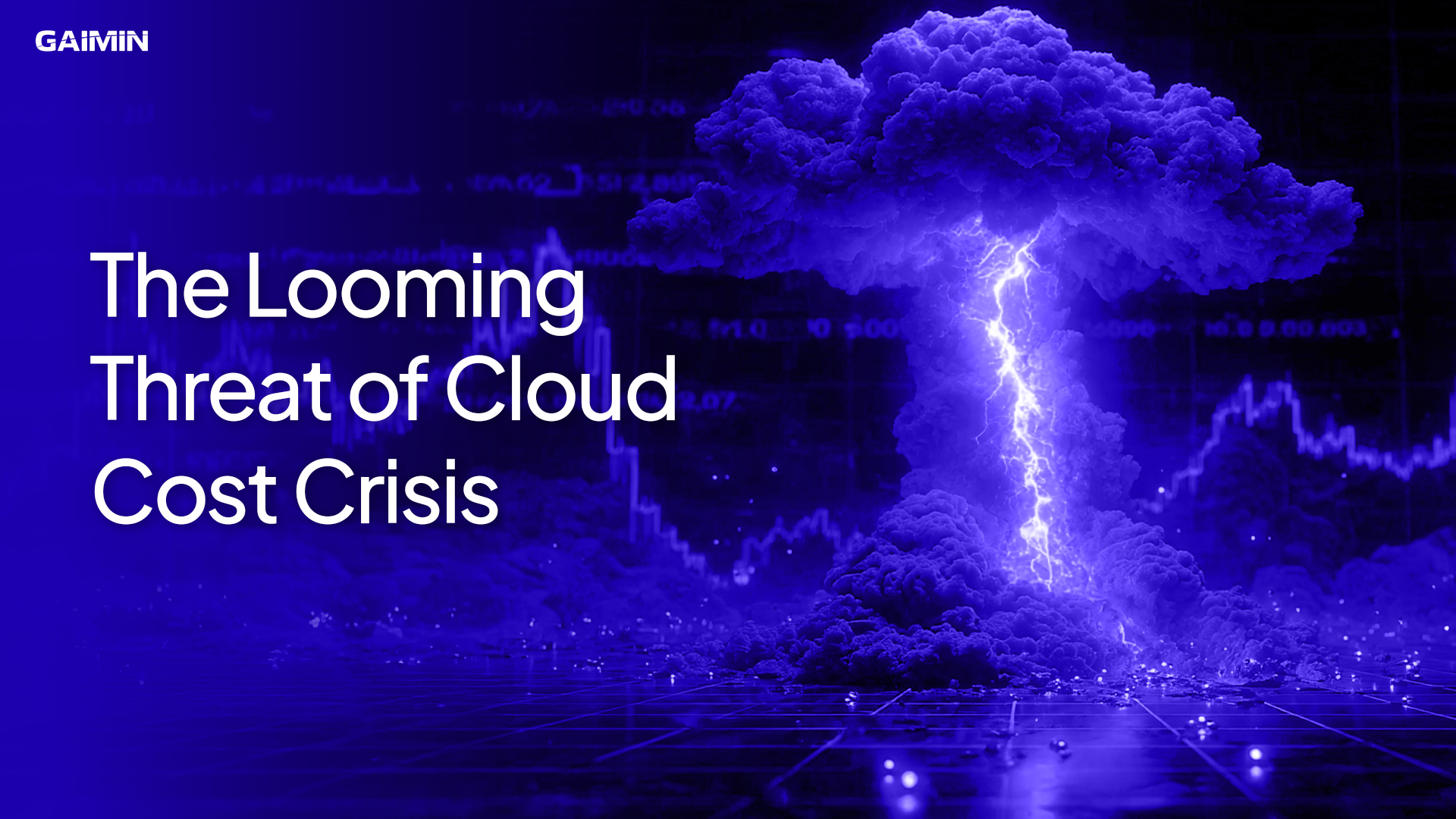Computing infrastructure has undergone multiple paradigm shifts over the decades, each driven by the need for greater efficiency, cost-effectiveness, and flexibility. From the era of on-premise computing, where companies managed their servers, to the cloud revolution, which brought scalability and remote accessibility, the industry has constantly evolved. Now, a new model is emerging—Cloud-Prem, a hybrid approach that combines the best of both worlds.
This article explores the evolution of computing, the strengths and limitations of each phase, and how GAIMIN Cloud’s decentralized file-sharing solution represents the next step in this journey.
The Era of On-Prem Computing: Owning your compute infrastructure on ground
What is On-Prem Computing?
Before the cloud, businesses and enterprises relied on on-premise (on-prem) infrastructure, meaning all computing resources—servers, networking hardware, storage, and software—were housed within the organization’s physical location.
Advantages of On-Prem Computing
- Control – Companies had full control over their data, security policies, and network configurations.
- Security – Sensitive information remained within company-owned data centers, reducing exposure to third-party breaches.
- Performance – On-prem solutions offered predictable performance since organizations managed and optimized their hardware directly.
Challenges of On-Prem Computing
- High Costs – Hardware, software, maintenance, and IT staff expenses make on-prem solutions expensive.
- Scalability Issues – Scaling requires purchasing additional hardware, leading to high capital expenditures.
- Complex Maintenance – Managing on-prem systems requires dedicated IT teams to handle updates, security patches, and system failures.
As businesses expanded, the limitations of on-prem computing became evident. This led to the rise of cloud computing.
The Cloud Revolution: On-demand Usage Instead of Owning Physically
The Shift to Cloud Computing
Cloud computing emerged in the early 2000s with companies like Amazon Web Services (AWS), Microsoft Azure, and Google Cloud providing on-demand, scalable computing resources. Instead of maintaining physical servers, businesses could rent computing power from a cloud provider.
Advantages of Cloud Computing
- Scalability – Cloud providers offered virtually limitless storage and computing power, allowing businesses to scale as needed.
- Cost Savings – Companies could switch from a capital expenditure (CAPEX) model to an operational expenditure (OPEX) model, paying only for what they used.
- Accessibility – Cloud computing enabled remote work and global collaboration, allowing employees to access data and applications from anywhere.
Challenges of Cloud Computing
- Data Sovereignty & Privacy – Sensitive data stored on third-party servers became vulnerable to government surveillance, legal restrictions, and cyber threats.
- Hidden Costs – While cloud computing reduced upfront investments, long-term expenses for storage, bandwidth, and compute power could become significant.
- Downtime & Latency – Cloud services rely on centralized data centers, which can experience service outages or introduce latency issues for geographically distributed users.
The cloud was a game-changer, but businesses soon realized that relying entirely on totally centralized cloud solutions had its drawbacks. Enter Cloud-Prem.
Cloud-Prem: The Hybrid Future of Computing
What is Cloud-Prem?
Cloud-Prem, or hybrid decentralized computing, blends the benefits of on-prem and cloud computing by connecting various smaller on-prem infrastructure into a cloud network, to create what we now know as Decentralized Computing. This system leverages the best of the two systems–Decentralized Physical Infrastructure Networks (DePIN) and Cloud Network to deliver businesses globally with safer, cheaper, and more scalable computational resources.
Why Cloud-Prem with GAIMIN is the Future
- Lower Costs – By decentralizing storage and computing across peer-powered networks like GAIMIN Cloud, businesses can significantly cut costs compared to renting from traditional cloud providers.
- Better Security & Data Sovereignty – Sensitive data can remain distributed securely across various on-prem PCs, ensuring greater compliance and privacy.
- Resilience & Uptime – Unlike traditional clouds, which rely on centralized data centers, Cloud-Prem solutions are distributed, reducing the risk of outages and single points of failure.
GAIMIN Cloud is at the forefront of this transition, offering a decentralized, cost-effective file-sharing solution that combines the strengths of both models.
How GAIMIN Cloud is Pioneering Cloud-Prem with Decentralized File Sharing
GAIMIN Cloud is not just another cloud provider, it’s redefining the way we think about computing. By leveraging the idle computing resources of gamers and everyday users of high-end PCs, GAIMIN Cloud offers:
- Significantly lower storage and file-sharing costs (At GAIMIN, we reduced our distribution expenses up to 70% with GAIMIN Cloud, and are currently saving multiple tens of thousands of dollars worth of compute expenses we had earlier on).
- A truly decentralized network that eliminates reliance on centralized cloud monopolies.
- Stronger security is achieved by distributing data across multiple nodes, reducing single points of failure.
For businesses and developers, and many other professionals in various sectors, this Cloud-Prem model offers the best of both worlds: the power and flexibility of cloud computing with the ownership and control of on-prem infrastructure.
The Inevitable Shift to Cloud-Prem
The transition from on-prem computing to cloud computing was driven by a need for scalability and cost-effectiveness. However, cloud’s limitations—such as high costs, security concerns, and vendor lock-in—have sparked a new evolution: Cloud-Prem.
GAIMIN Cloud is pioneering this movement, proving that decentralized file-sharing and hybrid computing models are the future. By harnessing the collective power of distributed networks, GAIMIN Cloud is offering a smarter, more cost-efficient, and resilient alternative to traditional cloud storage.
The question is no longer “Should we use cloud or on-prem?” The future is Cloud-Prem, and GAIMIN is leading it.
Want to start exploring our Cloud-prem based solutions today? Our File-Sharing service is a great place to start!



.png)
